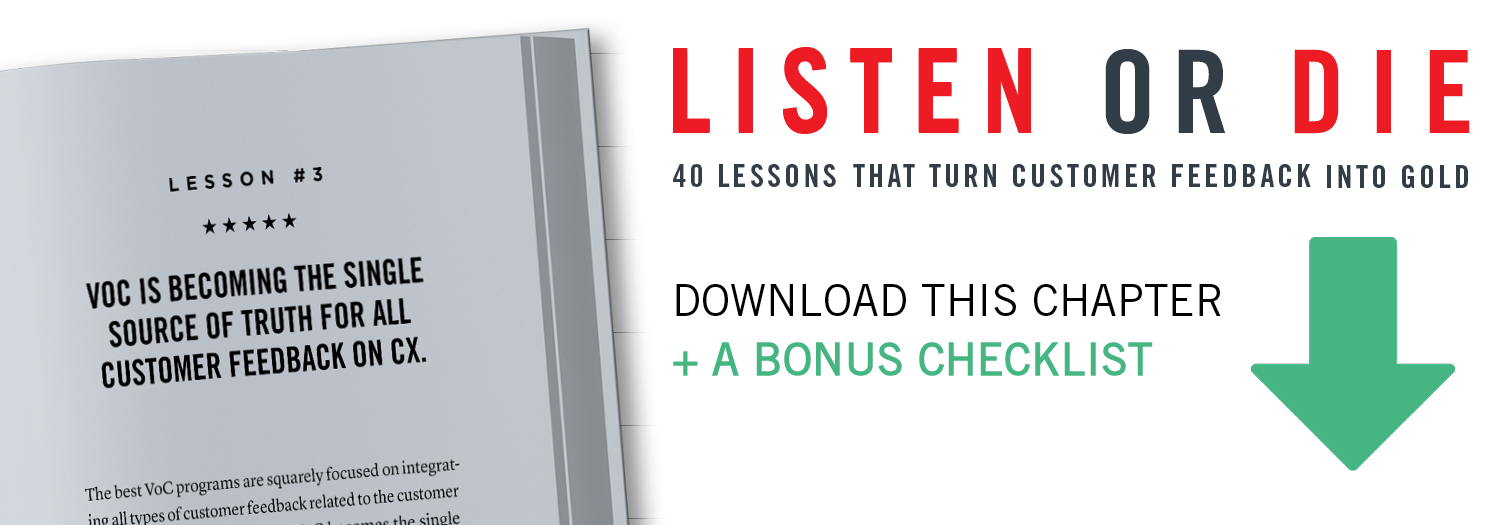Solicited Feedback
The core of most VoC programs, solicited transactional surveys reach out to customers during or immediately after an experience. They are primarily distributed via email or text. No matter how the company solicits the customer feedback, it is something that companies directly request, therefore the term solicited.
As introduced in Lesson 2, relationship surveys are also solicited and are often used as part of a comprehensive VoC program, although they are not transactional and focus on all your active customers rather than those who had a recent experience.
Unsolicited Feedback
Customers are increasingly volunteering feedback directly to the company or indirectly through social review sites. Unsolicited feedback is primarily thought of as social reviews, but can also include calls to a company’s contact center to complain about an issue; or feedback through the “contact us” feature on a company-supplied app or website.
All of these means are unsolicited, in that the company did not reach out directly asking for feedback from the customer. Out of all the unsolicited feedback channels, social reviews are the most powerful and need careful attention (see Lesson 29).
Verified & Observed Feedback
Verified Feedback
Verified feedback comes from experts, commonly called mystery shoppers or quality assurance professionals, who are hired to assess the experience that a company provides its customers. While this is not true “customer” feedback, it provides an important evaluation of the customer experience.
Here’s how this typically works. At a hotel, quality assurance (QA) professionals pretend to be a typical guest and have a checklist that reflects all the touchpoints a real guest might experience.
For example, how fast was the check-in? Did the person at the front desk greet the guests by their name and smile? How long was the line? Was the bed made? Was the rug clean? Did the bathroom’s soap dispenser contain soap? Did the remote control have that paper band on it that supposedly indicates it’s clean? Answers to these questions provide a surrogate for the quality of the customer experience, because the QA professional is acting as a customer!
Another type of verified feedback often used by a hotel might come from people within a company. These inspectors travel from company headquarters to each location to check on compliance with safety and brand standards. Specific standards might include anything from signage to uniforms to freezer temperatures. The goal is to create a consistent customer experience at every one of their locations.
This is all “verified” feedback because it is provided by experts. RizePoint is a PeopleMetrics partner and provides the best software in the quality assurance and brand compliance space. I highly recommend RizePoint if you are looking to include verified feedback within your VoC.
Observed Feedback
Your company might also consider a fourth type of feedback—observed. Some customers won’t complain no matter how unhappy they are. It’s only their behavior that gives away their true feelings.
Consider a restaurant experience in which a customer doesn’t say a word, but when the server collects the plates, a dish with no food eaten goes back to the kitchen untouched. Or consider a company that purchased a CRM software product and their salespeople rarely log on to use it. Or consider a coffee shop whose lines are so long that customers abandon the line and leave the store before purchasing.
Analyzing and predicting consumer behavior (also called Big Data) also falls into this category. Collecting and organizing such observed feedback and behaviors requires integration with operational systems and your VoC software platform. It’s often a heavy lift, but the benefits are well worth it.
The Single Source of Truth
For you to have a single source of truth around customer feedback data, you must implement a system of record, which is typically called a VoC software platform.
The good news is that advanced VoC software platforms can bring all types of customer feedback together under one roof, providing a single, comprehensive source of truth about an organization’s true, start-to-finish customer experience. This provides unprecedented opportunities to improve the customer experience. You are living in the right time to deliver exceptional customer experiences!









%20(1).png)